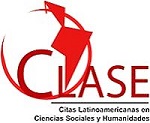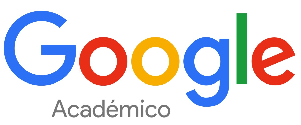The universe appointed at the constructed universe. Notes for think of writi ng as educational strut.
Keywords:
Language, Representation, Training, Ontology, writing across the curriculumAbstract
Education at all levels is aimed at solving the basic problems of human beings and only tangentially addresses their transcendental concerns, which ultimately define the decisions we take as individuals and as a society. This work aims to develop a philosophical support that would connect education with language. It seeks to explore the possibilities of get into an educational method that operates in and through language (especially written) whose immediate application is projected from to the whole system from elementary to college education. One could argue that education is based in language and even could complaint about its verbosity, however, experience shows that even in the so-called first world countries, the generalization is that it does not go beyond an utilitarian relationship with language, exclusively geared towards the transmission of ideas, which is why it is done a more instrumental use of it, that is, not significant.
Article Metrics
Abstract: 480 PDF (Español (España)): 215References
BERLO, David. (2000). El proceso de la comunicación. Introducción a la teoría y a la práctica. 2ª edición. Buenos Aires: El Ateneo. 265 p.
BLANCHOT, Maurice. (1992). El espacio literario. 3ª edición. Barcelona: Paidós Básica. 264 p.
CASSIRER, Ernst. (1998). Filosofía de las formas simbólicas, Tomo 1: El lenguaje. 2ª edición. Méjico: Fondo de Cultura Económica. 311 p.
DE SAUSSURE, Ferdinand. (1986). Curso de lingüística general. 24ª edición. Buenos Aires: Losada. 260 p.
DELEUZE, Guilles y GUATTARÍ, Félix. (1993) ¿Qué es la filosofía? 8ª edición. Barcelona: Anagrama. 224 p.
ECHEVERRÍA, Rafael. (2003). Ontología del lenguaje. Santiago: J.C. Sáez. 419 p.
FOUCAULT, Michel. (1996). De lenguaje y literatura. 3ª edición. Barcelona: Paidós. 221 p.
FOUCAULT, Michel. (1999). Estética, ética y hermenéutica. 3ª edición. Barcelona: Paidós Básica. 480 p.
FREIRE, Paulo. (1998) ¿Extensión o Comunicación?: la concientización en el medio rural.
ª edición. Buenos Aires: Siglo XXI Editores. 108 p.
GADAMER, Hans-Georg. (1996a). Estética y Hermenéutica. Madrid: Tecnos. 316 p.
GADAMER, Hans- Georg. (1996b). La actualidad de lo bello. El arte como juego, símbolo y fiesta. 1ª reimp. Barcelona: Paidós Ibérica. 124 p.
GOODMAN, Nelson. (1990). Maneras de hacer mundos. Madrid: La Balsa de la Medusa. 198 p.
HEGEL, Georg W. (1983). Estética III, La forma del arte simbólico. Tomada de la 2a. ed. alemana de 1842, 8v. Buenos Aires: Siglo Veinte. 214p.
HEIDEGGER, Martin. (1997). El Ser y El Tiempo. 7ª reimp. Méjico: Fondo de Cultura Económica. 479 p.
LUHMANN, Niklas. (1998). Sistemas sociales: lineamientos para una teoría general. 2ª
edición. Méjico: Anthropos. 445p.
MATURANA, Humberto. (2002). La objetividad: un argumento para obligar. 2ª edición. Santiago: Dolmen. 149 p.
MATURANA, Humberto y VARELA, Francisco. (1998). El árbol del conocimiento. Las bases biológicas del entendimiento humano. 14ª edición. Santiago: Editorial Universitaria. 204 p.
MC LUHAN, Marshal, and FIORE, Quentin with AGEL, Jerome (1967). The Medium is the Massage: An Inventory of Effects. New York: Bantam Books. 159 p.
MONTOYA, Carlos y RUSSO, Ricardo (2006). Ecoalfabetización, talleres integrados de
educación ambiental para escuelas primarias. Guácimo: Earth. 127 p.
NIETZSCHE, Friedrich. (1984). Crepúsculo de los ídolos. 7ª edición. Madrid: Alianza. 200 p.





















